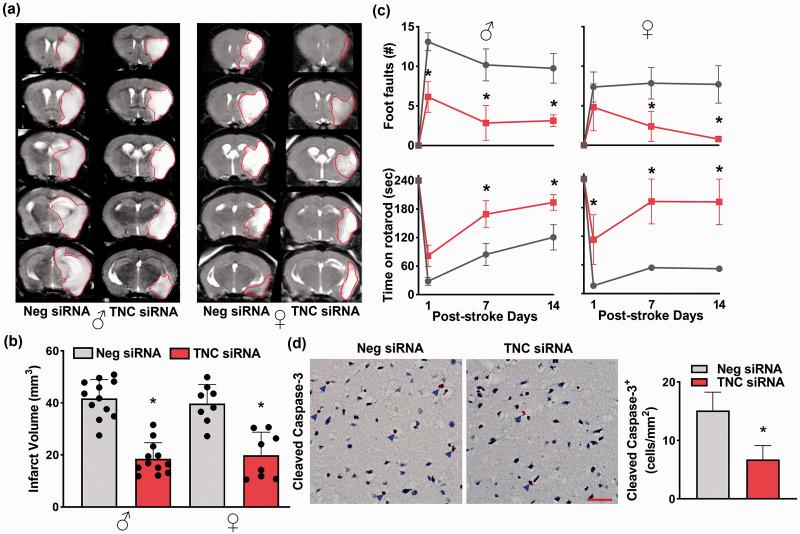Figure 3.
Post-stroke TNC siRNA treatment decreased brain damage and improved motor function in adult male and female mice. (a) & (b) The TNC siRNA cohort showed significantly smaller infarcts than the Neg siRNA cohort in both male and female mice subjected to 3 days of reperfusion after transient MCAO. T2 MRI scans (a) are from representative mice of the 2 groups. Bar graphs (b) values are mean ± SD (n = 12 and 8 per group for male and female, respectively). (c) Both male and female TNC siRNA cohorts (red color) showed significantly improved post-stroke motor function between days 1 and 14 of reperfusion compared with sex-matched Neg siRNA cohorts (grey color) studied by beam walk test and rotarod test. Values in the line graphs are n = 7/group for both sexes. (d) The male TNC siRNA cohort also showed a reduced number of cleaved caspase-3+ cells at 3 days of reperfusion following transient MCAO. Immunostained images are from representative mice of the 2 groups. Blue arrows indicate the cleaved caspase-3+ cells. Images are from the peri-infarct areas of the ipsilateral cortex. Values in the histogram are mean ± SD; n = 4/group. Y-axis of males and females combined (b); *p < 0.05 compared with the respective Neg siRNA cohort by using the Mann-Whitney U test (b) and (d) and two-way repeated-measures ANOVA followed by Sidak’s multiple comparisons posttest (c). The scale bar is 100 μm.

